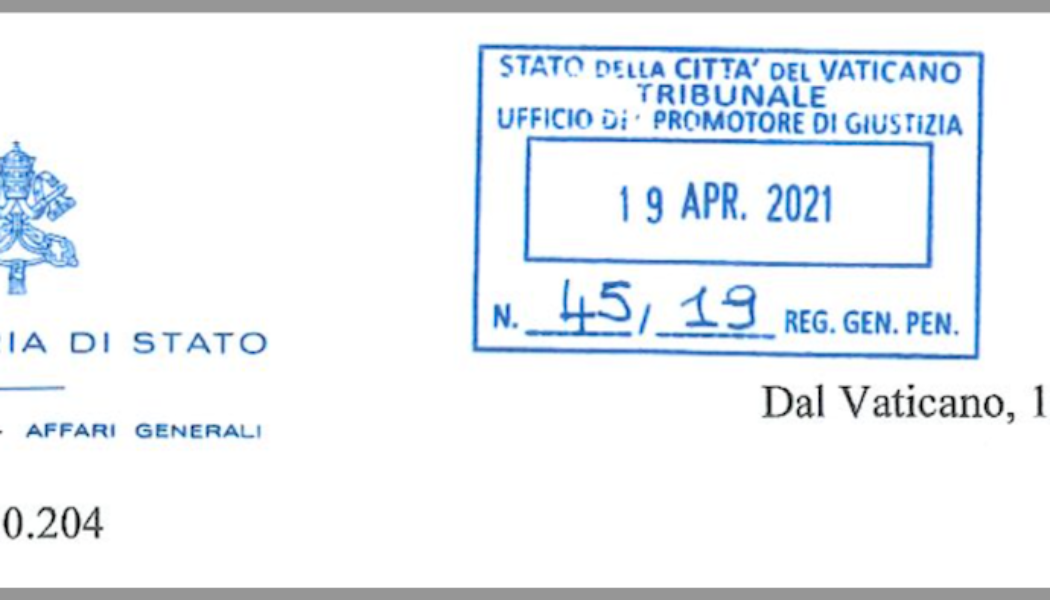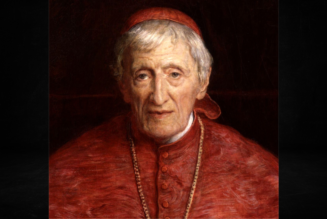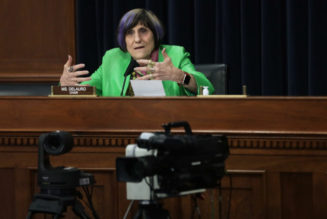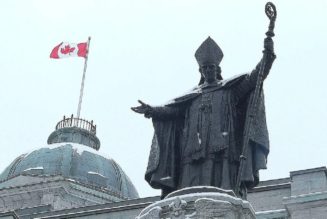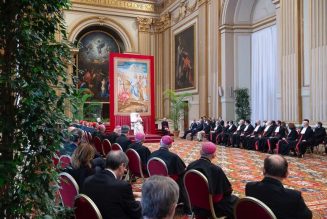
.
> Italiano
> English
> Español
> Français
> All the articles of Settimo Cielo in English
If you want to receive (or go back to receiving) a notification for every new article, click HERE and subscribe to the Newsletter from Settimo Cielo!
*
Among the papers in the possession of the Vatican tribunal called to judge Cardinal Giovanni Angelo Becciu and other defendants, with the next hearing scheduled for January 25, there is an explanatory note at the top of which it is written that “during the board meeting of April 6 the Holy Father gave the authorization to make the aforementioned Note public.” Signed: Edgar Peña Parra, substitute secretary of state.
This is what Settimo Cielo does in this post: provide readers with the essential features of this hitherto unpublished document, delivered by Peña Parra to the Vatican tribunal to describe the situation of the Secretariat of State at the time of his taking office as substitute, on October 15 2018, “as well as some aspects of the activity of the Secretariat of State regarding the 60 Sloane Avenue building in London.”
The dossier is 322 pages long, with numerous attachments, but the key pages are the first twenty with the Note of Peña Parra. Which among other things includes information that could create a diplomatic incident with none other than China.
It in fact relates “some news furnished by the archbishop of Vilnius (Lithuania) regarding the vulnerability” of the Vatican computer system. With Peña Parra specifying as follows: “A nephew of the archbishop, an expert on the subject, had evidence of China’s intrusion into our computer system, and we received the proof of this.”
*
Cybersecurity aside, the picture that Peña Parra sketches of the Secretariat of State and in particular of its administrative office headed at the time by Msgr. Alberto Perlasca is decidedly critical.
“The Holy Father,” the note states, “had called for an audit of the administrative office and of the funds of the Secretariat of State, which should have been completed before the new substitute took office,” meaning Peña Parra’s arrival in the place of his predecessor, Becciu.
But none of this was done. Perlasca – Peña Parra writes – justified the noncompliance by maintaining that “the Secretariat of State had in recent years gone through a very difficult time with the Secretariat for the Economy, due to Cardinal George Pell’s presumptions of taking control of the whole administration of the Holy See, which meant interfering in the duties proper to the Secretariat of State in the administrative sphere. Secondly, Msgr. Perlasca was also of the opinion that both the previous auditor general, dott. Libero Milone, and the current auditor general, dott. Alessandro Cassinis Righini, were not persons worthy of trust.”
Peña Parra writes that both he and the auditor repeatedly insisted that the pope’s will be fulfilled. But without the slightest result. The administrative office staged a “work-to-rule” strike, without changing by one iota its systematic “modus operandi,” described as follows:
“It is a mechanism in which the superior is put under pressure, pushing him to act in haste, portraying ‘catastrophic’ events, such as: ‘If this is not signed immediately there is a risk of losing a great deal of money’. […] Many times I was unexpectedly interrupted even while meeting with ambassadors, bishops, etc., in order to sign urgent documents that, according to them, could not wait until the end of the talks. […] The constant leitmotiv was that I did not know the ‘machine’ and therefore the reservations I expressed were groundless and only slowed down the work of the administrative office.”
The mismanagement also concerned the money held by the Secretariat of State, deposited in three investment funds and in no fewer than thirteen banks, with the respective contracts “almost always stipulated in favor of the counterparties.” Not to mention the “serious errors” in accounting, which “unjustifiably inflated the value of the assets managed by the Secretariat of State,” considered at a certain date to amount to 603 million euros when instead they totaled 425 million.
In short, “the overall management was aimed at financial speculation and not at the conservative and safe preservation of the assets of the Secretariat of State.”
And the disastrous London deal? In Peña Parra’s judgment this was “the masterpiece of the administrative office, presenting all the aforementioned critical issues and many others that the human imagination would find it difficult to carry out. For example, going to look for the worst in international finance and going into business with them.”
*
The second part of the Note by Peña Parra concerns precisely the developments of the London operation from the end of November 2018 onwards, which was handled not only by him, the substitute, but also by the secretary of state, Cardinal Pietro Parolin, and Pope Francesco himself.
On November 22 2018, urged by Msgr. Perlasca to give the go-ahead to a financial initiative defined as “very urgent” to complete the purchase of the London building, Peña Parra ordered him to draw up a “memorandum serving to present the request to the cardinal secretary of state and to the Holy Father for their evaluation of the matter.”
To this end, on Sunday November 25 the substitute asked for and obtained “an urgent meeting with the Holy Father,” whose response was a “yes” with a precaution: “He asked me to keep in mind two things, which he later went on to repeat from time to time: (i) ‘let us try to lose as little as possible’ and (ii) ‘we must turn the page and start over’.”
The next day, Monday November 26, Cardinal Parolin also gave his approval, returning the memorandum to Peña Parra with this annotation penned at the bottom in somewhat shaky Italian:
 “After reading this memorandum, in the light of the explanations furnished yesterday evening by Msgr. Perlasca and dott. Tirabassi, having had assurances on the solidity of the operation (which would bring advantages to the Holy See), its transparency and the absence of reputational risks (which, indeed, would be exceeded by those related to the management of the GOF), I am in favor of the stipulation of the contract.”
“After reading this memorandum, in the light of the explanations furnished yesterday evening by Msgr. Perlasca and dott. Tirabassi, having had assurances on the solidity of the operation (which would bring advantages to the Holy See), its transparency and the absence of reputational risks (which, indeed, would be exceeded by those related to the management of the GOF), I am in favor of the stipulation of the contract.”
The GOF, Global Opportunity Fund, to which Cardinal Parolin alludes, was one of the three investment funds in which the Secretariat of State had invested money, to be exact 200 million dollars previously deposited with the Swiss banks BSI and UBS, with which in 2014 the then prefect of the Secretariat for the Economy Cardinal George Pell had ordered the accounts closed. The GOF, used to invest in the London deal, was managed by the financier Raffaele Mincione.
The operation was therefore completed. “With the approval of the Holy Father and the cardinal secretary of state,” Peña Parra writes, “we went ahead to finalize the operation for the acquisition of the company that owned the building, signing the ratification on November 27 2018.”
There still remained, however, a thousand shares in the possession of another financier, Gianluigi Torzi, who for their transfer was asking 10 million euros.
The alternative hypotheses initially evaluated at the Secretariat of State were the following: “1) file a suit against Torzi; 2) acquire full control of the asset (thus quantifying the value of the one thousand shares).”
The solution adopted was the second, not only because it was “considered cheaper and with more contained risks,” but above all because it was “strictly aligned with the Superior will,” that is, with the will of the pope. Who not only encouraged the Secretariat of State to proceed along this path, but himself gave the impetus to the negotiations, as reported by Peña Parra in the Note:
“On Saturday, December 22 2018, the Holy Father asked me to go to Santa Marta, where he introduced me to dott. Giuseppe Milanese, […] whom I met for the first time, as well as dott. Manuele Intendente, […] who I later learned was one of Torzi’s lawyers, while Milanese was an acquaintance of the Holy Father. […] The next day I thought it appropriate to ask the administrative office for clarification on what I had learned during the meeting at Santa Marta. […] Not finding Msgr. Perlasca on the premises, since he had already left for his Christmas vacation, I summoned Tirabassi to my office.” Fabrizio Tirabassi, also one of the defendants in the trial, was the second in command in the administrative office of the Secretariat of State.

A few days later, on December 26, the feast of Saint Stephen, Pope Francis again received Torzi at Santa Marta, with his family, also having himself photographed with him (see above), and informed Peña Parra of this, who in the Note records the instructions he received from Francis:
“My action […] was and still is motivated by the desire to put into practice the Superior will, also manifested in the meeting with Torzi on December 26 2018, that is to ‘lose as little as possible and start over’.”
A third meeting between the pope and Torzi came shortly afterward, reported by Peña Parra as follows:
“At the beginning of January 2019 the Holy Father received Torzi in audience together with the Administrator, prof. Renato Giovannini, Milanese, and the undersigned. During a brief meeting, Pope Francis wished to reiterate to Torzi that he appreciated what he had done for the Secretariat of State, and that he had given the substitute the mandate of completely reorganizing the asset and financial management of the Secretariat of State and that his intention was to ‘turn the page and start over’. This Superior will became our strong point in the negotiations with Torzi, who was never able to disclaim the will expressed by the Holy Father.”
The thousand shares were in fact acquired by the Secretariat of State on May 2 2019, at the price of 10 million euros.
But this does not keep Peña Parra from writing, in the Note, that he had “come to the conviction that the Secretariat of State had been the victim of a scam,” on account of how the head of the administrative office had previously acted, “effectively forcing the Secretariat of State, in the course of completing the contract, to pay Torzi” that large sum:
“With his signature, premature and in any case not authorized by the superiors, Msgr. Perlasca had ceded to Torzi not only the thousand shares, but above all the exclusive right of management of the building, […] creating considerable financial damage for the Secretariat of State, not to mention the reputational damage for the Holy Father and the whole Church.”
The fact is that the recovery of the thousand shares was negotiated and concluded with Francis as the lead actor, according to what is written in the explanatory Note by Peña Parra made public at the behest of the pope himself.
Questioned in the preliminary phase of the trial against Becciu and other defendants, Perlasca confirmed this involvement of the pontiff, but was harshly silenced by promoter of justice Alessandro Diddi: “Monsignor, what you are saying is beside the point! Before doing what we are doing now, we went to the Holy Father and asked him what happened, and I may have my doubts about everyone except for the Holy Father.”
Made public by a defense attorney at the trial hearing last November 17, this passage of Perlasca’s questioning led Diddi to repudiate himself, denying that he had questioned the pope.
But that Francis was among the protagonists of the affair that has ended up on trial at the Vatican is now firmly established. And if the accused take him to court? The great unknown will be how to untie this knot.
.
Join Our Telegram Group : Salvation & Prosperity
